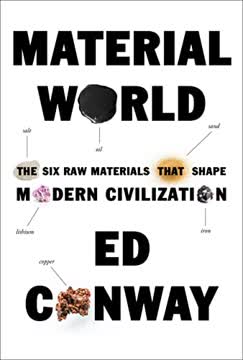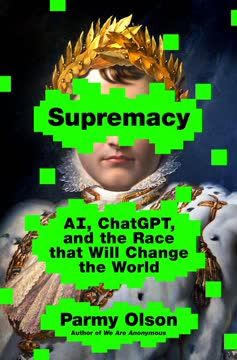ข้อสำคัญ
1. การค้นพบพืชหายากจุดชนวนปัญหาพลังงานสีเขียว
ดังนั้นจึงเกิดความย้อนแย้งขึ้น: สิ่งใดสำคัญกว่ากัน ระหว่างพืชชนิดนี้กับแร่ลิเธียมใต้ดิน?
ตัวแทนของทางเลือกที่ยากลำบาก การค้นพบ Tiehm’s buckwheat พืชชนิดหนึ่งที่ไม่มีที่ใดในโลกนอกจากที่นี่ บนแหล่งแร่ลิเธียมขนาดใหญ่ในรัฐเนวาดา โดย Jerry Tiehm สะท้อนความขัดแย้งระหว่างการอนุรักษ์สิ่งแวดล้อมกับความต้องการทรัพยากรที่เพิ่มขึ้นเพื่อเทคโนโลยีพลังงานสีเขียว สถานการณ์นี้เป็นภาพสะท้อนของความท้าทายในการหาจุดสมดุลระหว่างความห่วงใยต่อธรรมชาติกับความจำเป็นเร่งด่วนในการเลิกใช้เชื้อเพลิงฟอสซิล
ต้นทุนของการเปลี่ยนผ่านสู่พลังงานสีเขียว การผลักดันพลังงานหมุนเวียน เช่น รถยนต์ไฟฟ้า แผงโซลาร์เซลล์ และกังหันลม ต้องการโลหะจำนวนมาก เช่น ลิเธียม ทองแดง และนิกเกิล ซึ่งมักพบในพื้นที่ที่มีความอ่อนไหวทางนิเวศวิทยา ทำให้ต้องตัดสินใจอย่างยากลำบากว่าจะให้ความสำคัญกับคุณค่าใดก่อน
ภาพสะท้อนระดับโลก สหรัฐอเมริกาในฐานะผู้บริโภคพลังงานรายใหญ่ ต้องเผชิญกับผลกระทบทางสิ่งแวดล้อมจากความทะเยอทะยานด้านพลังงานสีเขียว ปัญหานี้ขยายไปทั่วโลก เมื่อประเทศอย่างจีนต้องหาจุดสมดุลระหว่างการเติบโตทางเศรษฐกิจและการปกป้องสิ่งแวดล้อม
2. ดินแดนศักดิ์สิทธิ์ปะทะความต้องการทองแดง
ถ้าฉันอยากไปที่นั่นและสวดมนต์ได้ ฉันควรมีสิทธินั้น และฉันไม่อยากให้บริษัทต่างชาติมาบอกฉันว่า ‘ไม่ คุณทำไม่ได้’
มรดกของ Apache Leap เหมืองทองแดง Resolution Copper ที่เสนอในรัฐแอริโซนา ซึ่งจะต้องทำลาย Chi’chil Biłldagoteel (Oak Flat) สถานที่ศักดิ์สิทธิ์ของชนเผ่า San Carlos Apache แสดงให้เห็นถึงความขัดแย้งระหว่างการพัฒนาเศรษฐกิจกับสิทธิของชนพื้นเมือง ชาวแอปาเช่ถือว่าพื้นที่นี้เป็นบ้านของเทวดาและเทพเจ้า และได้จัดพิธีกรรมที่นี่มาหลายชั่วอายุคน
บทบาทสำคัญของทองแดง ทองแดงเป็นโลหะสำคัญสำหรับการเปลี่ยนผ่านสู่พลังงานสีเขียว ใช้ในรถยนต์ไฟฟ้า กังหันลม และแผงโซลาร์เซลล์ แหล่งแร่ทองแดง Resolution Copper เป็นหนึ่งในแหล่งแร่ทองแดงที่ยังไม่ได้ถูกใช้มากที่สุดในโลก และอาจผลิตทองแดงได้ถึงหนึ่งในสี่ของความต้องการประจำปีของสหรัฐฯ
สมดุลที่ยากลำบาก ความขัดแย้งระหว่างความต้องการทองแดงกับการอนุรักษ์สถานที่ศักดิ์สิทธิ์ของชนพื้นเมืองตั้งคำถามถึงคุณค่าที่ควรได้รับความสำคัญก่อน สถานการณ์นี้สะท้อนถึงความซับซ้อนทางจริยธรรมในการเดินหน้าสู่อนาคตพลังงานสีเขียว
3. มาตรฐานการทำเหมืองอย่างมีจริยธรรมกลายเป็นความจำเป็น
เราเข้าใจว่าเราสามารถใช้พลังของแบรนด์ Tiffany เพื่อสร้างความตระหนัก เมื่อแบรนด์ที่มีชื่อเสียงอย่าง Tiffany พูดอะไรออกมา มันมีน้ำหนักมาก
ความมุ่งมั่นของ Tiffany ในการจัดหาวัตถุดิบอย่างรับผิดชอบ การเดินทางของ Tiffany & Co. สู่การปฏิบัติการทำเหมืองอย่างมีจริยธรรม แสดงให้เห็นถึงความสำคัญที่เพิ่มขึ้นของการจัดหาวัตถุดิบอย่างรับผิดชอบในอุตสาหกรรมเครื่องประดับ โดยตระหนักถึงการขาดมาตรฐานเหมืองแร่ระดับโลก Tiffany จึงได้ดำเนินการเพื่อให้แน่ใจว่าโลหะของตนถูกสกัดและแปรรูปอย่างรับผิดชอบ
โครงการรับรองการทำเหมืองอย่างรับผิดชอบ (IRMA) Tiffany และ Earthworks ร่วมก่อตั้ง IRMA ซึ่งเป็นความร่วมมือของหลายฝ่ายที่รวมบริษัทเหมือง ลูกค้า กลุ่มสิ่งแวดล้อม ชนพื้นเมือง และสหภาพแรงงาน เพื่อกำหนดมาตรฐานการทำเหมืองอย่างรับผิดชอบ มาตรฐานของ IRMA ครอบคลุมประเด็นต่าง ๆ เช่น คุณภาพน้ำ สุขภาพและความปลอดภัยของคนงาน และการได้รับความยินยอมจากชนพื้นเมือง
ความโปร่งใสและความรับผิดชอบ การตรวจสอบและรายงานสาธารณะของ IRMA ช่วยสร้างความโปร่งใสและความรับผิดชอบในอุตสาหกรรมเหมืองแร่ ด้วยการกำหนดมาตรฐานที่ชัดเจนและตรวจสอบการปฏิบัติตาม IRMA ช่วยให้ผู้บริโภคตัดสินใจได้อย่างมีข้อมูล และกระตุ้นให้บริษัทเหมืองปรับปรุงแนวทางปฏิบัติของตน
4. ต้นทุนทางสิ่งแวดล้อมของ “ทางออกสีเขียว”
คุณก็ขายเพชรเลือดเหมือนกัน
ต้นทุนที่ซ่อนเร้นของเทคโนโลยีพลังงานสีเขียว การแสวงหาพลังงานหมุนเวียนและรถยนต์ไฟฟ้ามักมองข้ามต้นทุนทางสิ่งแวดล้อมและสังคมที่เกี่ยวข้องกับการทำเหมืองวัสดุที่จำเป็น การสกัดและแปรรูปลิเธียม ทองแดง นิกเกิล และโลหะหายาก อาจก่อให้เกิดผลกระทบต่อสิ่งแวดล้อมอย่างรุนแรง เช่น การทำลายแหล่งที่อยู่อาศัย มลพิษทางน้ำ และการปล่อยก๊าซเรือนกระจก
เครื่องเป่าลมใบไม้เป็นตัวอย่าง เครื่องเป่าลมใบไม้ที่ใช้เชื้อเพลิงเบนซินดูเหมือนไม่เป็นอันตราย แต่กลับปล่อยสารมลพิษมากกว่ารถยนต์ทั่วไป แสดงให้เห็นถึงการแลกเปลี่ยนทางสิ่งแวดล้อมที่ซ่อนอยู่ในผลิตภัณฑ์ที่ใช้ในชีวิตประจำวัน
ความจำเป็นของแนวทางแบบองค์รวม อนาคตพลังงานที่ยั่งยืนอย่างแท้จริงต้องการการประเมินผลกระทบทางสิ่งแวดล้อมและสังคมในทุกขั้นตอนของห่วงโซ่อุปทาน ตั้งแต่การทำเหมือง การผลิต ไปจนถึงการกำจัด รวมถึงการส่งเสริมการทำเหมืองอย่างรับผิดชอบ ลดการบริโภค และลงทุนในกระบวนการรีไซเคิลและนำกลับมาใช้ใหม่
5. ชุมชนท้องถิ่นตกอยู่ในสถานการณ์ลำบาก
สิ่งที่ศักดิ์สิทธิ์สำหรับชุมชนของฉันคือผู้คนมีงานทำและมีบ้านอยู่
ความต้องการทางเศรษฐกิจกับความกังวลด้านสิ่งแวดล้อม การถกเถียงเกี่ยวกับโครงการเหมืองมักเกิดความขัดแย้งระหว่างชุมชนท้องถิ่นที่ต้องการโอกาสทางเศรษฐกิจกับนักอนุรักษ์ที่กังวลเรื่องความเสียหายต่อสิ่งแวดล้อม เมือง Superior ในรัฐแอริโซนา ที่ถูกฉีกขาดระหว่างคำมั่นสัญญางานจากเหมือง Resolution Copper กับการต่อสู้ของชนเผ่า San Carlos Apache เพื่อปกป้องสถานที่ศักดิ์สิทธิ์ เป็นตัวอย่างของความขัดแย้งนี้
คำมั่นสัญญางานทำ บริษัทเหมืองมักสัญญาว่าจะนำงานและความเจริญรุ่งเรืองทางเศรษฐกิจมาสู่ชุมชนที่กำลังลำบาก อย่างไรก็ตาม คำมั่นเหล่านี้อาจเป็นเรื่องยากที่จะทำให้เป็นจริง และผลประโยชน์ทางเศรษฐกิจในระยะยาวอาจไม่คุ้มค่ากับต้นทุนทางสิ่งแวดล้อมและสังคม
ความสำคัญของการมีส่วนร่วมของชุมชน บริษัทเหมืองต้องมีการสื่อสารและรับฟังความกังวลของชุมชนท้องถิ่นอย่างจริงจัง รวมถึงการชดเชยที่เป็นธรรมสำหรับการใช้ที่ดิน ปกป้องแหล่งน้ำ และลดผลกระทบต่อสิ่งแวดล้อมให้น้อยที่สุด
6. ภูมิรัฐศาสตร์ของโลหะพลังงานสีเขียว
ส่วนสำคัญของการเปลี่ยนผ่านจากเชื้อเพลิงฟอสซิลที่เราต้องทำคือการทำให้การขนส่งไฟฟ้าเป็นจริง มันจะต้องใช้ทรัพยากรจำนวนมาก และถ้าประเทศอื่น ๆ โดยเฉพาะคู่แข่งของเรา เห็นว่าเรามีจุดอ่อนลึกในด้านนี้ พวกเขาจะใช้ประโยชน์จากเรา
การเปลี่ยนแปลงด้านความมั่นคงพลังงาน ความมั่นคงด้านพลังงานไม่ได้หมายถึงแค่น้ำมันและก๊าซธรรมชาติอีกต่อไป แต่รวมถึงลิเธียม ทองแดง และโลหะอื่น ๆ ที่จำเป็นสำหรับรถยนต์ไฟฟ้าและเทคโนโลยีพลังงานหมุนเวียน สหรัฐฯ ต้องเผชิญกับความเสี่ยงจากการเปลี่ยนจากการพึ่งพาน้ำมันจาก OPEC ไปสู่การพึ่งพาจีนและประเทศอื่น ๆ สำหรับวัสดุพื้นฐานของพลังงานสีเขียว
ความโดดเด่นของจีน จีนควบคุมห่วงโซ่อุปทานโลหะสำคัญระดับโลกอย่างมาก รวมถึงโลหะหายาก การแปรรูปลิเธียม และการผลิตแบตเตอรี่ ความโดดเด่นนี้ก่อให้เกิดความกังวลเกี่ยวกับความเป็นอิสระทางพลังงานและความมั่นคงของชาติสหรัฐฯ
ความจำเป็นของห่วงโซ่อุปทานที่หลากหลาย สหรัฐฯ ต้องรักษาแหล่งวัสดุสำคัญที่เชื่อถือได้และยั่งยืนจากแหล่งต่าง ๆ เพื่อป้องกันไม่ให้คู่แข่งทางภูมิรัฐศาสตร์ควบคุมการเปลี่ยนผ่านสู่พลังงานสีเขียว ซึ่งรวมถึงการลงทุนในเหมืองและการแปรรูปภายในประเทศ รวมถึงการสร้างพันธมิตรกับประเทศพันธมิตร
7. สัญญาและความเสี่ยงของการสกัดลิเธียมในเนวาดา
ส่วนสำคัญของการเปลี่ยนผ่านจากเชื้อเพลิงฟอสซิลที่เราต้องทำคือการทำให้การขนส่งไฟฟ้าเป็นจริง มันจะต้องใช้ทรัพยากรจำนวนมาก และถ้าประเทศอื่น ๆ โดยเฉพาะคู่แข่งของเรา เห็นว่าเรามีจุดอ่อนลึกในด้านนี้ พวกเขาจะใช้ประโยชน์จากเรา
ศักยภาพของโครงการ Rhyolite Ridge โครงการลิเธียม Rhyolite Ridge ในเนวาดาเป็นโอกาสสำคัญสำหรับสหรัฐฯ ในการเพิ่มการผลิตลิเธียมภายในประเทศ โครงการนี้อาจผลิตลิเธียมเพียงพอสำหรับการผลิตรถยนต์ไฟฟ้าหลายแสนคันต่อปี
ความกังวลด้านสิ่งแวดล้อม โครงการนี้เผชิญกับการคัดค้านอย่างหนักจากนักอนุรักษ์ เนื่องจากอาจส่งผลกระทบต่อ Tiehm’s buckwheat พืชหายากที่ไม่มีที่อื่นในโลก ความขัดแย้งนี้สะท้อนถึงการแลกเปลี่ยนระหว่างการพัฒนาเศรษฐกิจกับการอนุรักษ์สิ่งแวดล้อม
การแสวงหาทางออกที่ยั่งยืน บริษัท Ioneer ผู้พัฒนาโครงการกำลังสำรวจวิธีลดผลกระทบต่อสิ่งแวดล้อม เช่น การย้ายปลูก Tiehm’s buckwheat และใช้เทคนิคการทำเหมืองที่ทันสมัย ความสำเร็จของโครงการขึ้นอยู่กับการหาจุดสมดุลระหว่างการผลิตลิเธียมและการปกป้องสิ่งแวดล้อม
8. การผลักดันเหมืองและการแปรรูปภายในประเทศ
ประเทศนี้ต้องตัดสินใจ เราสะอาดบริสุทธิ์ในอเมริกา เราคิดว่าคนอื่นจะทำงานสกปรกในการทำเหมืองแทนเรา แต่เรากลับอยู่ในสถานะที่เปราะบางมาก
ความเป็นอิสระทางพลังงาน สหรัฐฯ มุ่งลดการพึ่งพาแหล่งวัสดุสำคัญจากต่างประเทศโดยเพิ่มการทำเหมืองและการแปรรูปภายในประเทศ เป้าหมายนี้ขับเคลื่อนด้วยความกังวลเรื่องความมั่นคงของห่วงโซ่อุปทาน ความสามารถในการแข่งขันทางเศรษฐกิจ และความมั่นคงของชาติ
พระราชบัญญัติการลดเงินเฟ้อ กฎหมายนี้เชื่อมโยงเครดิตภาษีรถยนต์ไฟฟ้ากับการผลิตวัสดุ EV ภายในประเทศ กระตุ้นให้ผู้ผลิตรถยนต์จัดหาวัสดุจากสหรัฐฯ หรือประเทศคู่ค้าเสรี อย่างไรก็ตาม กฎหมายนี้ถูกวิจารณ์ว่าอาจใช้เวลาหลายปีกว่าจะหาวัสดุเพียงพอในประเทศ
การต่อต้านการทำเหมือง แม้จะมีความจำเป็นในการเพิ่มเหมืองภายในประเทศ โครงการหลายแห่งกลับเผชิญการต่อต้านอย่างหนักจากนักอนุรักษ์ ชุมชนใกล้เคียง และชนพื้นเมือง การต่อต้านนี้ทำให้การพัฒนาเหมืองในสหรัฐฯ ชะลอตัว และประเทศต้องพึ่งพาการนำเข้า
9. บทบาทของการรีไซเคิลในอนาคตที่ยั่งยืน
คุณไม่สามารถมีพลังงานสีเขียวโดยไม่ต้องทำเหมือง นั่นคือความจริง
รีไซเคิลเป็นทางออก การรีไซเคิลแบตเตอรี่ลิเธียมไอออนและขยะอิเล็กทรอนิกส์อื่น ๆ ช่วยลดความจำเป็นในการเปิดเหมืองใหม่ การรีไซเคิลสามารถกู้คืนโลหะมีค่า เช่น ลิเธียม ทองแดง นิกเกิล และโคบอลต์ เพื่อนำไปผลิตแบตเตอรี่และผลิตภัณฑ์ใหม่
ความท้าทายของการรีไซเคิล แม้จะมีศักยภาพ การรีไซเคิลแบตเตอรี่ลิเธียมไอออนยังเผชิญกับอุปสรรคหลายประการ เช่น ขาดโครงสร้างพื้นฐาน ความซับซ้อนของเคมีแบตเตอรี่ และต้นทุนการขนส่ง สหรัฐฯ ยังตามหลังจีนในด้านความสามารถในการรีไซเคิลแบตเตอรี่
เศรษฐกิจหมุนเวียน เศรษฐกิจหมุนเวียนที่เน้นการใช้ซ้ำและรีไซเคิลวัสดุแทนการทิ้งเป็นสิ่งจำเป็นสำหรับอนาคตที่ยั่งยืน ด้วยการลงทุนในโครงสร้างพื้นฐานรีไซเคิลและส่งเสริมการบริโภคอย่างรับผิดชอบ สหรัฐฯ สามารถลดการพึ่งพาการทำเหมืองและลดผลกระทบต่อสิ่งแวดล้อมได้
10. ความฝันของการสกัดลิเธียมโดยตรง (DLE)
เราต้องการหาปัจจัยที่จำกัดการเร่งให้เกิดอนาคตพลังงานที่ยั่งยืน และไม่ว่าปัจจัยเหล่านั้นจะเป็นอะไร Tesla จะลงมือแก้ไข
เทคโนโลยีที่มีแนวโน้มดี เทคโนโลยีการสกัดลิเธียมโดยตรง (DLE) มีศักยภาพในการสกัดลิเธียมจากน้ำเกลือได้อย่างมีประสิทธิภาพและลดผลกระทบต่อสิ่งแวดล้อมเมื่อเทียบกับบ่อระเหยแบบดั้งเดิม DLE ช่วยลดการใช้น้ำ ลดการรบกวนพื้นที่ และเร่งกระบวนการผลิต
ความท้าทายของ DLE แม้จะมีความหวัง เทคโนโลยี DLE ยังเผชิญกับอุปสรรคหลายประการ เช่น ต้นทุนเริ่มต้นสูง ความซับซ้อนทางเทคนิค และความจำเป็นในการปรับแต่งตามสถานที่ ไม่มีเทคโนโลยี DLE ใดที่พิสูจน์ได้ในระดับการค้า
อัปเดตล่าสุด:
FAQ
What’s The War Below: Lithium, Copper, and the Global Battle to Power Our Lives by Ernest Scheyder about?
- Critical minerals and green energy: The book investigates the global struggle over lithium, copper, and other essential metals needed for electric vehicles and renewable energy, focusing on the tension between environmental protection and resource extraction.
- Mining controversies and case studies: It presents real-world conflicts at sites like Thacker Pass and Rhyolite Ridge in Nevada, and the Resolution Copper mine in Arizona, highlighting the perspectives of miners, Indigenous peoples, environmentalists, and local communities.
- Geopolitical and economic context: Scheyder situates these mining battles within broader global supply chains, U.S. energy policy, and international competition, especially with China’s dominance in mineral processing.
Why should I read The War Below by Ernest Scheyder?
- Insight into green energy dilemmas: The book offers a nuanced look at the environmental, social, and economic challenges of sourcing metals vital for climate change solutions.
- Understanding real-world impacts: Through detailed case studies, readers see the direct effects of mining projects on communities, ecosystems, and Indigenous lands.
- Relevance to current debates: As the world transitions to renewable energy, the book explains the critical role of metals and the geopolitical stakes, making it essential for those interested in climate policy, sustainability, and energy.
What are the key takeaways from The War Below by Ernest Scheyder?
- Mining is essential but contentious: The green energy transition relies on metals like lithium and copper, but mining often leads to environmental harm and social conflict.
- U.S. supply chain vulnerabilities: The United States has significant mineral reserves but depends heavily on imports and lacks sufficient processing capacity, especially compared to China.
- Complex stakeholder conflicts: Mining projects face opposition from environmentalists, Indigenous groups, and local communities, making it difficult to balance economic development, environmental stewardship, and cultural preservation.
How does The War Below by Ernest Scheyder explain the role of lithium-ion batteries in the green energy transition?
- Battery composition and metals: Lithium-ion batteries require metals like lithium, nickel, cobalt, copper, and graphite, which are critical for energy storage and powering electric vehicles.
- Demand surge and supply challenges: The book details how the shift to electric vehicles and renewables is driving a massive increase in demand for these metals, necessitating dozens of new mines globally by 2030.
- Supply chain vulnerabilities: Scheyder highlights the challenges in mining, processing, and refining these metals, including geopolitical risks and environmental concerns.
What is direct lithium extraction (DLE) and why is it significant in The War Below by Ernest Scheyder?
- Definition and promise: DLE is a set of emerging technologies designed to extract lithium from brine more efficiently and with less environmental impact than traditional evaporation ponds.
- Technological challenges: Despite heavy investment, no DLE technology had worked independently at commercial scale by the book’s publication, making it a high-stakes gamble for countries like Bolivia.
- Potential impact: Automakers, investors, and mining companies are betting on DLE to supply the bulk of lithium needed for electric vehicles, hoping it will revolutionize the industry.
How does The War Below by Ernest Scheyder portray the environmental and social impacts of mining?
- Historical and ongoing harms: The book recounts disasters like the Brumadinho dam collapse and the destruction of Aboriginal sites, illustrating the environmental and cultural damage mining can cause.
- Water use and pollution: Mining projects often require vast amounts of water and can pollute waterways, threatening ecosystems and local communities.
- Community and Indigenous rights: Mining frequently displaces or disrupts Indigenous peoples and local residents, raising questions about consent, cultural preservation, and equitable development.
How are Indigenous tribes and local communities involved in mining conflicts in The War Below by Ernest Scheyder?
- Diverse perspectives: Indigenous communities are shown both opposing and supporting mining projects, reflecting varied priorities such as protecting sacred sites or seeking economic benefits.
- Sovereignty and consent: The book discusses concepts like Free, Prior, and Informed Consent (FPIC) and how tribes negotiate or resist mining on their lands.
- Tensions and alliances: Conflicts arise not only between tribes and companies but also within alliances, as social and political issues complicate opposition movements.
What is the significance of Tiehm’s buckwheat and the Rhyolite Ridge conflict in The War Below by Ernest Scheyder?
- Rare plant species: Tiehm’s buckwheat is a rare flower found only at Rhyolite Ridge in Nevada, where a lithium-boron mining project threatens its survival.
- Symbol of biodiversity vs. mining: The plant has become a focal point for environmentalists, representing the conflict between protecting biodiversity and enabling the green energy transition.
- Legal and scientific challenges: The book details the discovery of mass destruction of the plant, debates over its cause, and the struggle to balance lithium mining with species conservation.
How does The War Below by Ernest Scheyder address the role of major companies and governments in the mining sector?
- Corporate influence: Companies like Rio Tinto, Freeport-McMoRan, Albemarle, and Tesla are central actors shaping mining development and global supply chains.
- Government policies: U.S. and foreign governments influence mining through regulations, subsidies, and trade agreements, often balancing economic, environmental, and geopolitical interests.
- Conflicting agendas: The book reveals tensions between promoting mining for green technologies and protecting the environment or Indigenous rights.
What are the main geopolitical issues around critical minerals in The War Below by Ernest Scheyder?
- China’s dominance: China controls a large share of global mining, processing, and refining of lithium, rare earths, cobalt, and other critical minerals, giving it significant leverage in supply chains.
- U.S. strategic vulnerabilities: The United States produces only a small fraction of its mineral needs and relies heavily on imports, raising national security concerns.
- Global competition and alliances: Other countries like Russia, India, and the European Union are also investing in critical minerals to reduce dependence on China, leading to a new geopolitical contest.
How does The War Below by Ernest Scheyder cover technological innovation and recycling in the lithium industry?
- Industry oligopoly and new players: The book traces the history of lithium production, profiling major companies and new entrants like EnergyX and ioneer.
- Recycling’s growing importance: Scheyder discusses the challenges and opportunities in recycling lithium-ion batteries to recover metals and reduce reliance on new mining.
- Innovators and companies: Entrepreneurs like Ajay Kochhar (Li-Cycle) and JB Straubel (Redwood Materials) are pioneering recycling technologies, while DLE and other extraction innovations are explored for their potential to reshape the industry.
What are the best quotes from The War Below by Ernest Scheyder and what do they mean?
- “It takes as much energy to wish as it does to plan.” —Eleanor Roosevelt: This quote underscores the need for action and planning to address mining and climate challenges, not just hope.
- “You can’t have green energy without mining.” —Mark Senti: This blunt statement highlights the unavoidable reality that mining is fundamental to producing the metals needed for renewable energy.
- “The state will never lose sovereignty when it comes to lithium.” —Evo Morales: Reflects Bolivia’s determination to control its resources and avoid past exploitation.
- “This country has to make a decision.” —Senator Joe Manchin: Emphasizes the U.S. dilemma between preserving pristine lands and developing mines critical for the green energy transition.
รีวิว
The War Below เล่าเรื่องราวความขัดแย้งที่ซับซ้อนระหว่างการทำเหมืองแร่เพื่อหาแร่ธาตุสำคัญที่จำเป็นต่อเทคโนโลยีสีเขียว กับการอนุรักษ์สิ่งแวดล้อม ผู้อ่านต่างชื่นชมการรายงานที่มีความสมดุลของ Scheyder ซึ่งนำเสนอความขัดแย้งระหว่างบริษัทเหมืองแร่ นักอนุรักษ์สิ่งแวดล้อม และชุมชนท้องถิ่น หนังสือเล่มนี้วิเคราะห์ความย้อนแย้งที่ว่า แม้เราจะต้องการแร่ธาตุเหล่านี้เพื่อพลังงานสะอาด แต่การได้มาซึ่งแร่เหล่านั้นอาจทำลายระบบนิเวศได้ บางคนมองว่าเนื้อหามีความรู้และลึกซึ้ง แต่บางส่วนก็รู้สึกว่ามีการซ้ำซาก อย่างไรก็ตาม หนังสือเล่มนี้ช่วยให้เราเข้าใจถึงความท้าทายในการเปลี่ยนผ่านสู่พลังงานที่ยั่งยืนได้อย่างลึกซึ้งและรอบด้าน
Similar Books













